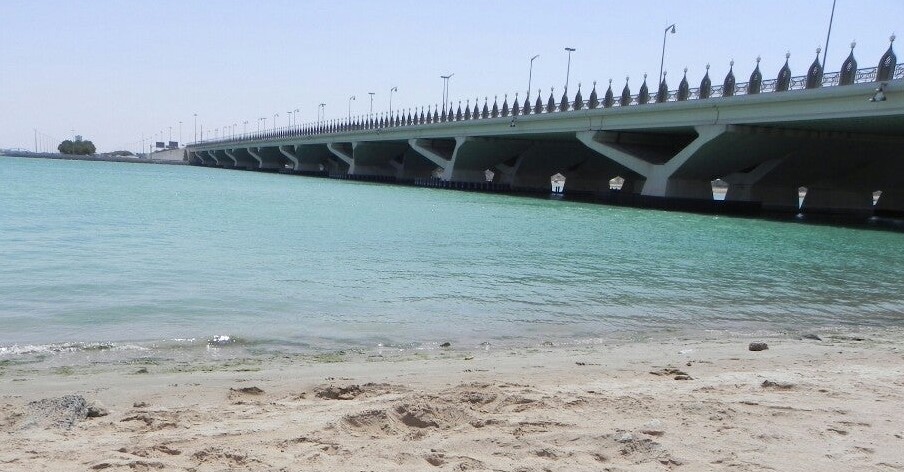In general, the national infrastructure sector includes various systems, facilities, cites, networks, processes, information, and people that provide the country’s functioning. At the same time, there are the national infrastructure’s parts that may be regarded as critical – in other words, without them, functioning will be substantially limited or even discontinued. Thus, critical national infrastructure (CNI) refers to systems, networks, facilities, and cites that ensure the provision of critical services essential for citizens, such as water supply, energy, transportation, telecommunication, and finance. Moreover, CNI includes systems, buildings, and networks that are not involved in the maintenance of these services, however, their disruption may lead to serious negative consequences for national security and the state’s functioning. For this paper, two assets are chosen from transportation infrastructure – Mussafah Bridge and Sheikh Zayed Bridge. In particular, the work addresses assets’ profiles in order to justify their belonging to CNI and identifies potential threats and hazards that may cause their disruption.
CNI Assets Profile
Mussafah Bridge is one of the main bridges of Abu Dhabi, located in Al Khaleej Al Arabi
Street that connects the island and mainland parts of the city from the south. The bridge has ten lanes, five on each side, and modern infrastructure, such as the improved system of lightning for public safety and the meeting of aesthetic standards (Karimi, 2021). Another bridge with the same functions is Sheikh Zayed Bridge, constructed in 2003-2010 by prominent architect Zaha Hadid (“Zaha Hadid and the world’s most intricately designed bridge,” 2020). Characterized by an unusual and futuristic design, a 64-meter-high and 842-meter-long bridge with eight lanes located in Al Salam Street is currently regarded as the city’s international symbol.


Both assets may be regarded as critical; in addition, both of them belong to national infrastructure and contribute to the community services’ functioning. First of all, both of these constructions connect the island and mainland parts of Abu Dhabi, such as Al Raha, Khalifa City, Bain Al Jessrain, and multiple industrial suburbs, carrying the main streets of the city. Along with the Maqta Bridge, Mussafah Bridge was Abu Dhabi’s first bridge, and without it, transportation within the city and the connection of its part with other areas of the country would be impossible. In turn, Sheikh Zayed Bridge aims to facilitate city transportation allowing “16,000 vehicles to pass per hour, cutting travel time by 15 minutes from the international airport to downtown Abu Dhabi” (“Zaha Hadid and the world’s most intricately designed bridge,” 2020, para. 10). In addition, the national importance of these facilities is determined by the fact that Abu Dhabi is the capital of the United Arab Emirates, the main city of the Emirate of Abu Dhabi, and the Abu Dhabi Metropolitan Area’s center. In this case, by providing public, commercial, and industrial transportation, both bridges contribute not only to the city’s well-being but to the whole country’s economic development and society’s welfare.
Threats and Hazards Identification
Due to its strategic importance, CNI assets may be targeted by terrorists, cyber criminals, and hostile states for espionage, disruption, and political, economic, financial, commercial, or military gain. In addition, there are natural disasters, such as severe storms, winds, and flooding, that may impact the daily functioning of CNI and lead to its disruption as well (Cabinet Office, 2017). Finally, there are social factors, including societal pressure, social unrest, staff absence, and public disorder, caused by political and economic challenges that may cause assets’ reduced capacity and temporary closures.
For bridges as CNI assets, all potential hazards may be divided into construction-related and exploitation-related threats. Thus, in the construction stage, hazards include poor quality of work, structural failure, unprofessional design, and the theft of materials that may cause destruction in the future. In turn, the exploitation-related period may be complicated by natural disasters and severe social instability. For Mussafah Bridge and Sheikh Zayed Bridge, the main threats are predominantly environmental. For instance, Sheikh Zayed Bridge “was designed to withstand temperatures from 0 to 60 degrees Celsius (32 to 140 degrees Fahrenheit), gusts of wind up to 160 km/h (99 mph), and strong earthquakes” (“Zaha Hadid and the world’s most intricately designed bridge,” 2020, para. 7). Moreover, the possibility of the destruction of bridges due to terrorist attacks cannot be excluded as well.
At the same time, it is possible to say that other CNIs and the country’s almost all communities will be affected by the disruption of these assets. First of all, they ensure the transportation of people, materials, and sources to other critical infrastructure facilities. In addition, in the case of these bridges’ limited capacity, the exploitation of other bridges will increase along with the limitation of urban transportation’s efficiency, which may lead to social tension.
Assets Critical Infrastructure Information (CII)
As previously mentioned, the manmade disruption of bridges may occur as a result of a terrorist attack. This possibility is justified by the city’s location in the Middle East, characterized by substantial terrorist activity. The first type of CII terrorists may use for these assets’ disruption is their technological characteristics. In other words, knowing the sizes of construction parts, perpetrators may evaluate the most appropriate place for the explosion that will lead to as massive destruction as possible. Another type of information that may be used is related to assets’ capacity. Thus, knowing when bridges are occupied by vehicles during the day allows terrorists to calculate to most suitable time to increase the number of victims.
References
Cabinet Office. (2017). Public summary of sector security and resilience plans [PDF document]. Web.
Karimi, J. (2021). New lighting system for Mussafah Bridge in Abu Dhabi. LinkedIn. Web.
Zaha Hadid and the world’s most intricately designed bridge. (2020). Web.